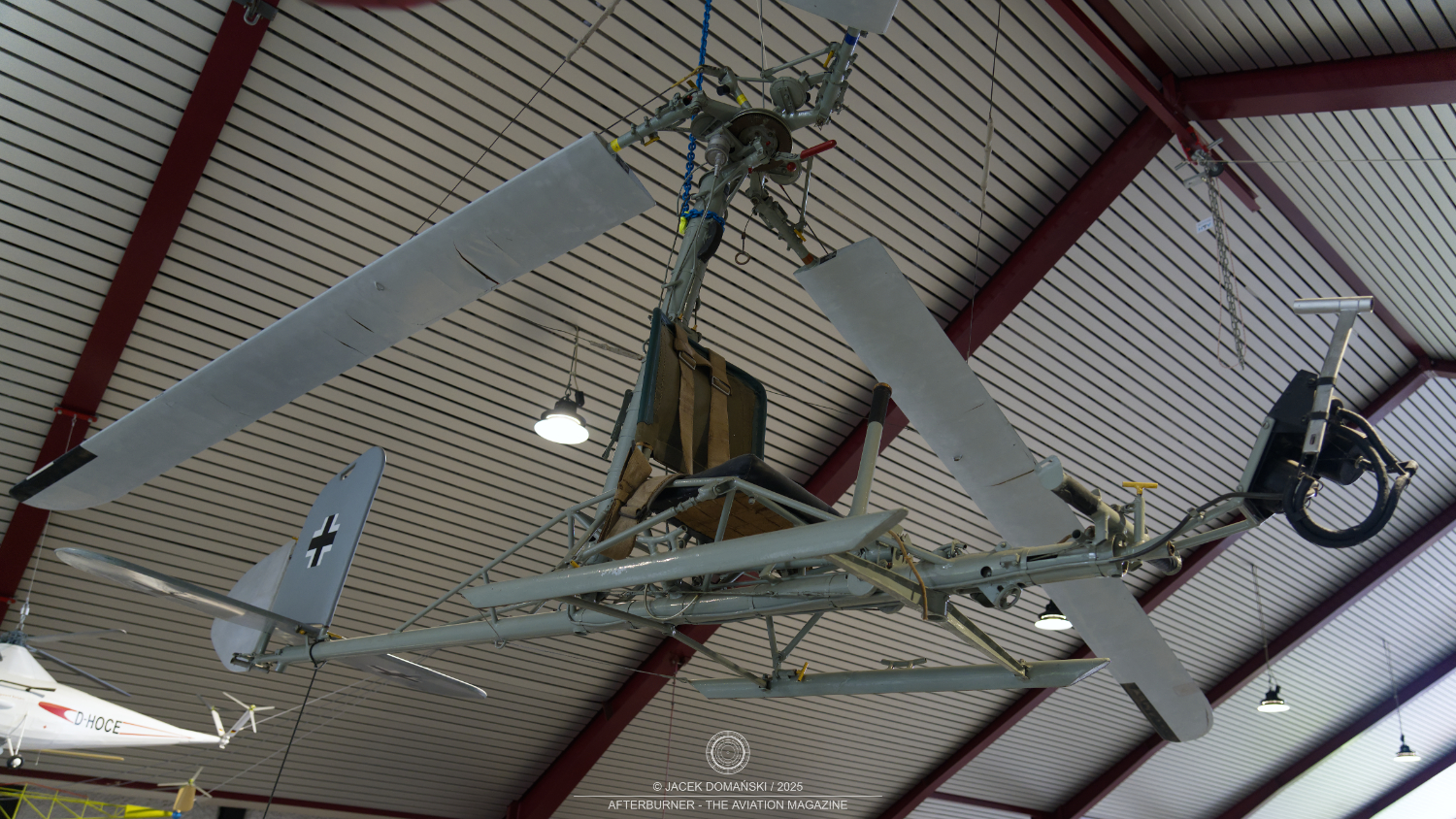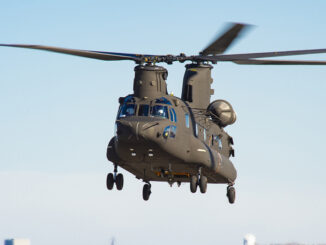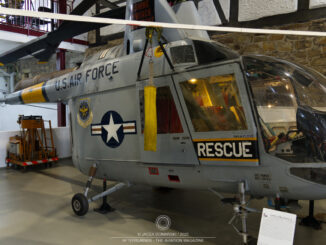 Focke-Achgelis Fa 330 Bachstelze (c/n 100406, formerly operated by Kriegsmarine / the German Navy), exhibited at Hubschraubermuseum Bückeburg (Bückeburg Helicopter Museum), June 2025.
Focke-Achgelis Fa 330 Bachstelze (c/n 100406, formerly operated by Kriegsmarine / the German Navy), exhibited at Hubschraubermuseum Bückeburg (Bückeburg Helicopter Museum), June 2025.
The idea of using an aircraft to improve observation range of submarines was born in Germany somewhere in the early 1941. Reportedly, the development was inspired by Carl Bode, the test pilot who learned about the issue during one of his usual assignments.
Although the German U-boats were considered deadly effective, they had a considerable disadvantage compared to other sea vessels. From ancient times, ship crews have tried to extend their visual range by establishing lookout points in the upper part of the mast, commonly known as crow’s nests. However, the submarine sail was only a few metres above sea level, which limited the view to about five nautical miles (9.3 kilometres).
Initially, there was an attempt to use a lightweight floatplane, an Arado Ar 231, as the scout aircraft. However, the aeroplane had to be stored inside the submarine and that caused several complications and finally proved little effectiveness of such idea. Then, there was Flettner Fl 265 experimental rotorcraft, which turned out to be more suitable for the aforementioned task but still too big to use it operationally with the U-boats.
In their search for small rotorcraft, German engineers turned their eyes to rotary-wing kites. In autumn of 1941, Focke-Achgelis was officially assigned the task of creating geschleppten Tragschrauberdrachens (English: a towed gyroplane), codenamed Entwurf 19 (Draft 19) and later re-designated as Bachstelze (wagtail). Development of the new aircraft was led by Paul Klages, the experienced aviation constructor, well-known from such aircraft as S 24 Kiebitz and Fw 44 Stieglitz.
Protype of the Fa 330 was initially tested in a wind tunnel in the then occupied France. Then, in June of 1942, the first flights took place in Travemünde. In August of the same year, evaluation flights from a submarine followed. At the end of 1942, the serial production of Bachstelze was officially launched.
The Fa 330 quickly proved to be an effective assistance for the German submarines. The kite could be deployed at the speed of only 16 knots (30 kph) and had the minimum speed of approximately 25 kph. The observer was usually raised to about 120 metres above the sea surface, tethered to the U-boat by a 300-metre-long cable. It allowed to increase the range of observation to up to twenty-five nautical miles (forty-six kilometres).
Onboard the submarine, the kite was stored in three steel cylinders. When the sea was calm, assembling or disassembling of the Fa 330 took less than five minutes. However, in worse weather conditions the procedure of recovering the rotorcraft and putting it into storage containers was a much more difficult task and could last even up to a half of hour.
In case of danger, the tether could be released, prompting the Fa 330 pilot to jettison the rotor blades. Next, a parachute would be deployed to allow the pilot to land in the water.
The first serial manufactured Fa 330s were delivered to Kriegsmarine at the beginning of 1943. Therefore, Bachstelze, became one of the first operational rotorcraft in aviation history. A total of approximately two hundred examples of the Fa 330 rotary-wing kites was made until the end of the Second World War. About 120 of them were operationally used with the German submarines.
Although the idea of creating the observational rotorcraft was innovative, and the Fa 330 proved to be well designed for the task, the German engineers did not take into account a completely different technology that was being rapidly developed at the time. Implementation of radar devices on sea vessels not only significantly increased observation range but also made the use of Bachstelze dangerous for the U-boat crews, due to its large radar signature.
Eventually, the operational use of the Fa 330 was limited to areas where encountering a radar-equipped Allied warship was unlikely, such as southern Atlantic or Indian Ocean.
In 1945, Focke-Achgelis developed a powered variant of the gyroplane, designated Fa 336. It had to be equipped with 45 hp Zündapp engine but never went beyond the drawing phase.



